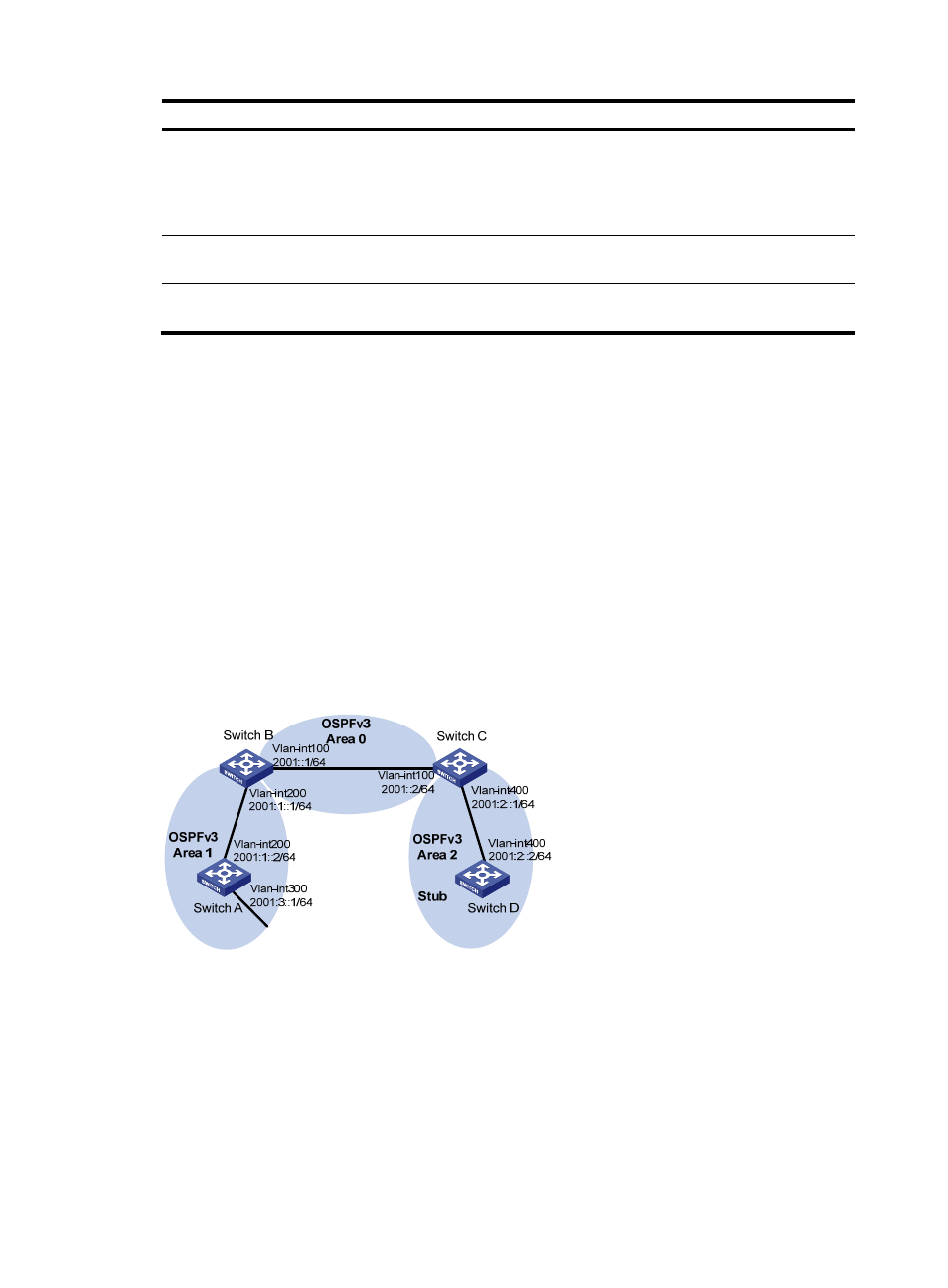Ospfv3 configuration examples, Configuring ospfv3 areas, Network requirements – H3C Technologies H3C S12500 Series Switches User Manual
Page 339: Configuration procedure

323
Task Command
Remarks
Display OSPFv3 link state
retransmission list information.
display ospfv3 [ process-id ] retrans-list [ { external |
grace | inter-prefix | inter-router | intra-prefix | link |
network | nssa | router } [ link-state-id ]
[ originate-router ip-address ] | statistics ] [ | { begin |
exclude | include } regular-expression ]
Available in
any view.
Display OSPFv3 statistics.
display ospfv3 statistics [ | { begin | exclude | include }
regular-expression ]
Available in
any view.
Display the GR status of the
specified OSPFv3 process.
display ospfv3 [ process-id ] graceful-restart status [ |
{ begin | exclude | include } regular-expression ]
Available in
any view.
OSPFv3 configuration examples
By default, Ethernet, VLAN, and aggregate interfaces are down. Before configuring these interfaces,
bring them up by using the undo shutdown command.
Configuring OSPFv3 areas
Network requirements
, all switches run OSPFv3. The AS is split into three areas, in which, Switch B and Switch C
act as ABRs to forward routing information between areas.
Configure Area 1 as an NSSA area, and configure Area 2 as a stub area to reduce LSAs in the area
without affecting route reachability.
Figure 108 Network diagram
Configuration procedure
1.
Configure IPv6 addresses for interfaces. (Details not shown.)
2.
Configure basic OSPFv3:
# Configure Switch A.
<SwitchA> system-view
[SwitchA] ipv6
[SwitchA] ospfv3
[SwitchA-ospfv3-1] router-id 1.1.1.1